Filed in: Source reduction
With the fundamentals of sustainable packaging in mind, following are some areas to consider when implementing changes to your packaging for improved environmental impact.
For nearly a decade, the biggest buzz in packaging has been the move toward sustainability, or “green” packaging. Driven by retailer requirements, public perception, economic pressures (petroleum, in particular), and government policies, sustainability impacts every aspect of a package—from the source of its raw materials to its end of life—and as such has proven to be an incredibly complex issue.
But over the years of debate and discovery, we have learned some core truths about the topic. First, there is no such thing today as a completely sustainable package. Instead, sustainability is a journey. The goal is to make incremental improvements over time in the sustainability of a package to reduce its overall environmental impact.
Second, in sustainability terms, packaging materials—including glass, plastic, paper, and aluminum—cannot be classified as good or bad. Each has its advantages and shortcomings, depending upon the product application and the goals and mission of the packager. Trade-offs are an inherent part of pursuing sustainability.
And last, packaging must be put into perspective by understanding its role in the full product supply chain. Packaging typically makes up less than 10% of the carbon footprint of a product; raw material production and consumer use often comprise the largest proportion. While packaging’s footprint may be small, its importance cannot be understated. If the package fails in its primary functions—protecting the product through the supply chain, enticing consumers to purchase, and facilitating consumption—all the energy consumed in manufacturing the product is lost when the product is wasted.
Ten tips for sustainable packaging design With these fundamentals in mind, following are some areas to consider when implementing changes to your packaging for improved sustainability:
1. Take a life-cycle approach to package design. There are many Life-Cycle Assessment (LCA) tools available today to help package designers understand the environmental impacts represented by different packaging options. One is the Sustainable Packaging Coalition’s COMPASS® (Comparative Packaging Assessment) online design software, which helps users make more informed material selections and design decisions by providing visual guidance on a common set of environmental indicators. PackageSmart LCA Software, one of several software-based LCA tools from EarthShift, also allows packaging designers to evaluate the environmental impacts of their design selections.
One caveat, however: Sustainability metrics and standards are still evolving, so pick a program, and stick with it. Using different tools to measure the same package may yield slightly different results. The key is to be consistent and make sure you are moving in the right direction in the core environmental areas that are of greatest concern to your company.
2. Evaluate each component of your package. Ask yourself, "Can changes be made to use less material without compromising product integrity?" Liv_Group2a.jpgOne successful example is all-natural sports drink-maker LIV Organic’s move from a traditional PET bottle to one with Amcor’s Groovy finish technology, which uses 31% less resin than a standard 38-mm finish. After LIV implemented the new design, the total weight of its 16.9-oz bottle was reduced 14.6%, from 36.8 g to 31.4 g. The technology also enabled the use of caps with 20% to 25% less resin.
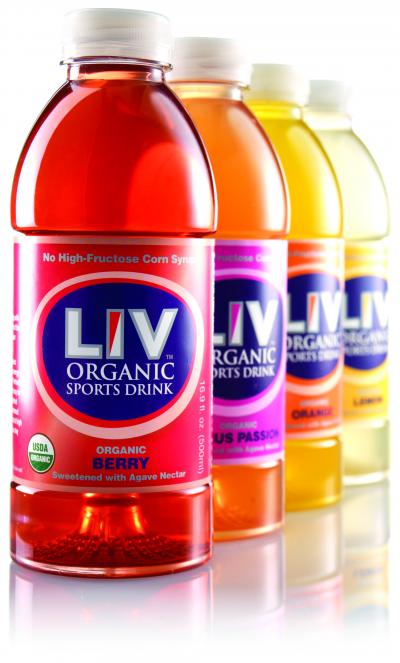
Another example is GlaxoSmithKline Consumer Healthcare’s Os-Cal calcium supplement. In 2010, OSC_NewVsOldMain_Inset_R.jpgGSK rolled out redesigned packaging that included a high-density polyethylene supplement bottle in a bold, full-body shrink-sleeve label capable of holding all product information. Scrapped were the product’s secondary carton and an insert with outdated graphics. On an annual basis, GSK says the new package saves approximately 208 tons of paper, or 1,440 trees; eliminates nearly 330,000 lb of CO2 emissions (the equivalent of removing 30 cars from the road); and conserves about 2,052 million BTUs, or the energy used by 23 U.S. homes.

Suppliers are continually innovating with containers, caps, labels, and other components that improve the package-to-product ratio, resulting in a smaller footprint, and oftentimes in a smaller price tag, as well.
3. Consider new alternatives for distribution packaging. New machinery and material technologies are enabling packagers to use fewer materials to create multipacks, bundles, and pallets, as well as create shelf-ready packaging that minimizes waste at the retailer level.
For water distributor Unlimited Water Processing, Inc., switching from corrugated cases to new elliott_and_darren_test_packs.jpgshrink-pack technology for its bottled water bundles was a risk that paid off. The Nested Pack™ from Polypack positions bottles in a staggered-row configuration that results in a sturdy, stable shrink-wrapped bundle that eliminates the need for corrugated trays or pads. After implementing the Nested Pack, Unlimited Water reduced its cost per case from roughly 45 cents to just 10 cents. And, according to company owner Elliott Henry, customers love the new package because it uses fewer materials, is easier to dispose of, and is more attractive.
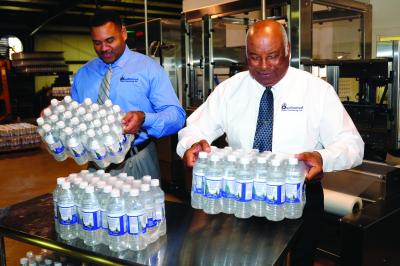
Several options exist for more sustainable stretch wrapping/palletizing, including machines engineered to optimize film use. Another method is the elimination of stretch wrap and hot melt in favor of removable adhesives, such as those from Lock n’ Pop, that stabilize loads while reducing the footprint of the pallet. In California, artisanal food maker Premier Organics is employing a reusable polypropylene pallet cover that can be used up to 250 times. The company estimates that the system will eliminate 4,500 lb of material annually, or about 40% of its pallet-wrap usage.
4. Look for opportunities to make your packaging reusable—where it makes sense. In Costa Rica, Pizza Hut customers have been introduced to a new pizza box design that allows the box to be broken down into plates and a smaller box for leftovers. In 2010, KFC.jpgKentucky Fried Chicken debuted its Reusable KFC Sides Container. Made of polypropylene, with patented “ventless vent technology” that allows moisture to escape without requiring a hole in the lid, the clear container with red lid is promoted as being reusable, and microwave- and dishwasher-safe.
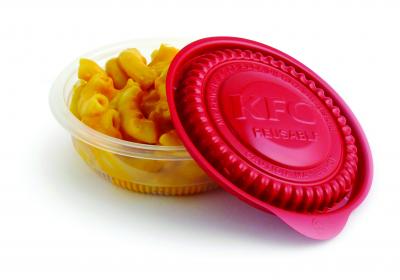
But reusability is not just for food packaging. PUMA garnered great attention when it introduced its “Clever Little Bag,” an attractive, reusable red shoe bag used to package its footwear. As a result of the change, PUMA reduced its paper consumption by 65% and estimated it would reduce water, energy, and diesel consumption at the manufacturing level by more than 60% per year.
5. Consider changes in your product. The best example of a product category that has undergone significant change to accommodate more sustainable packaging is household cleaning products. Beginning with laundry detergents and rippling through other cleaner and chemical products, CPGs have turned to concentrated formulas to reduce the amount of water shipped from factory to retail shelf and to enable smaller package sizes. methodlaundry_group_50_1.jpgPerhaps the most compact of all: Method’s 8X-concentrated laundry detergent formula can wash 50 loads per 20-oz bottle, and 25 loads per 10-oz bottle. Also iQ_cleaner.jpgpopular in the cleaning products industry have been systems that combine concentrated product refills with reusable packaging.
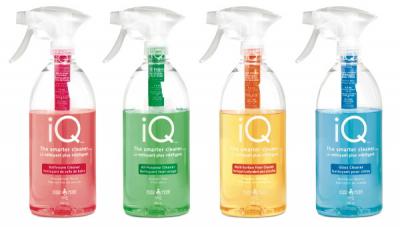
Another lesser-known yet very innovative example of a product modified to affect changes in packaging is General Mills’ Betty Crocker Hamburger Helper. Several years ago, the company reengineered the physical properties of the noodles within the meals to enable the design of a smaller carton size. The change resulted in a savings of 890,000 lb/yr of paper fiber, an 11% reduction in greenhouse gas emissions (GHGs), and the elimination of 500 trucks on the road per year.
6. Whenever possible, design for recyclability. One of the most effective ways to preserve the energy expended in manufacturing packaging materials is through recycling. While many materials, such as paper and PET, may be widely recycled, oftentimes coatings, labels, and other elements added to enhance package functionality or aesthetics may render them unfit for the recycling stream. But new options are emerging.
One promising technology is from Smart Planet Technologies. The company’s EarthCoating can be used as an alternative to 100% polyethylene coatings in high-barrier folding carton applications. EarthCoating’s formulation includes powdered minerals, which reduces the plastic content in the coating, allowing the finished packaging material to be recycled under ISRI recyclability standards.
From PaperWorks Industries, a filmless holographic technology called HoloBrite™ is now being used for packaging to achieve a shimmering holographic appearance without the use of a film lamination. This process results in a package that can be recycled in traditional paperboard recycling streams without contamination from polyester and metal. AquafreshWhiteShine.jpgIn 2010, GSK Consumer Healthcare used the decorative process with a metallic coating from Henkel to create eye-catching, recyclable paperboard packaging for its Aquafresh White & Shine toothpaste brand.
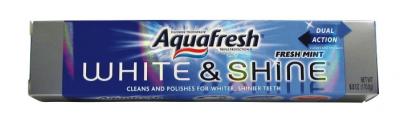
Another new recyclable (and recycled-content) package technology that has caused consumers to take a second look is molded-pulp packaging from Ecologic Brands. The most well publicized application of the material is fromEcoLogic_7th_Gen.jpg Seventh Generation, which launched its 4X-concentrated liquid laundry detergent in the package in 2011. The container consists of a molded-pulp outer shell made from 70% recycled cardboard (OCC) and 30% old newspapers (ONP) that can be recycled up to seven times. The package's inner film pouch with spout has been constructed of polyethylene only, making it suitable for recycling with plastic grocery bags, while the pack’s polypropylene closure is recyclable through Preserve's Gimme 5 recycling program.

7. Employ packaging strategies that encourage product consumption. Approximately 34 million tons of food waste are generated in the U.S. each year, according to the U.S. Environmental Protection Agency. So packaging that increases the likelihood that the majority of a product is consumed provides a tremendous sustainability advantage. Among the technologies that can be used to help reduce food waste are reclosable features, clearly marked use-by dates, and technologies that assist in evacuating all of a product from its package. Hellmann’s Easy Out! Mayonnaise package employs a nonstick surface on the inside of the container that provides the slip properties needed to get the last bit of mayo from the jar.
And, while bulk packaging may seem a more sustainable alternative than single-serve packages, given its smaller package-to-product ratio, single-serve may prove a more environmentally friendly option if it ensures product consumption.
8. Know where your packaging materials come from. Increasingly, retailers and consumers are looking to CPGs for transparency. It is to your benefit to make sure you are using responsibly sourced packaging materials. For example, toy manufacturer Mattel recently faced very vocal criticism from Greenpeace, which accused Mattel of using paperboard packaging that contained significant amounts of timber from Indonesian rain forests. Since then, Mattel has launched new sustainable sourcing principles to guide its procurement of paper and wood fiber. Hasbro quickly followed suit.
For Stonyfield Farm, the use of non-Genetically Modified (GM) crops is a core value. When it switched to corn-based bioplastic for some of its yogurt cups, it learned its resin supplier could not guarantee the use of non-GMO corn in its feedstock. So Stonyfield became the first major purchaser of offsets through the Working Landscapes Certificates, which ensures that an equivalent amount of corn is grown to sustainable agriculture standards.
9. Evaluate your distribution system for space-saving opportunities. In a presentation at Michigan State University’s second annual Packaging Executives Forum, consultant Kevin Howard of Packnomics, LLC, emphasized the importance of designing packaging “from the outside in, rather than from the inside out,” to minimize distribution logistics costs. “It is vital to understand what is happening in your own environment,” he said. “Some packages that don’t pass ISTM [International Safe Transit Assn.] standards pass real-world tests and vice versa. Walk through your distribution pipeline.”
His message, in “Space…The Final Frontier,” was that wasted space in packaging results in excess materials, transport, handling, and storage. To reduce a package size while maintaining its integrity, he noted that the packager must begin by understanding the known sizing of the transport mode that will be used and then minimizing the package size to hold everything at the lowest possible cost.
Other takeaways: “Space is found around components, inside of boxes, on pallets and between pallets,” “Maximizing load density is vital to minimizing environmental impact,” and “Space costs money… minimize it!”
10. Consider materials made from renewable feedstock. Packaging based on renewable feedstocks—from bioplastics made of corn or sugarcane, to protective packaging constructed of mushroom roots—is a rapidly growing area. But there are many questions still to be answered regarding the viability of some of these technologies and their relative sustainability versus traditional materials.
When evaluating renewable feedstocks for use in packaging materials, as advised above: Use a full life-cycle approach; understand how these materials perform in the recycling stream; know where the raw materials are sourced from; and ensure that the resulting packaging provides the required functionality for your product.
Above all, be very wary of additives and other technologies that promise to make packaging “just disappear.” While it is a very alluring idea, many scientific experts debate the environmental safety of such technologies.
Contact: Tony
Phone: +86-188-1682-5234
Tel: +86-188-1682-5234
Company: Shenzhen Gerong Industrial Corporation Limited
Add: Shangxue Technology Industrial Park,Jihua Road, Bantian, Longgang District, Shenzhen,Guangdong,China